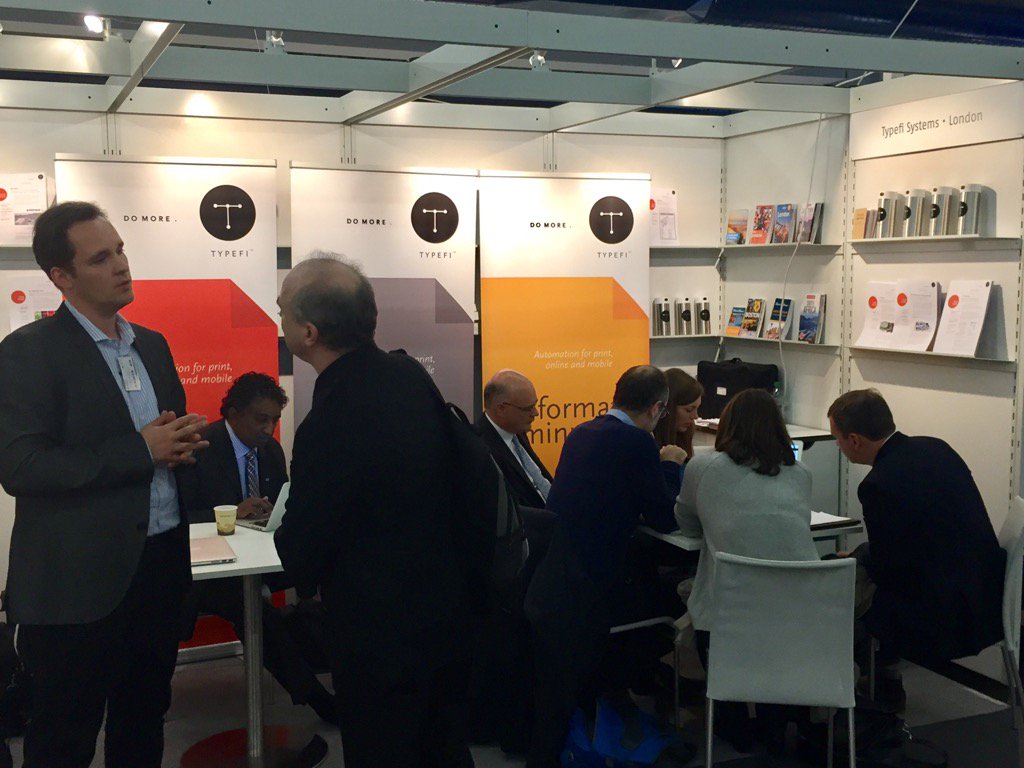Typefi won the Australian Export Award for Small Business in November 2016. Since then, I have been asked many times to speak about our experiences in building a successful export business. Below are some factors I believe have impacted our export success.
Before getting into the details, I need to state some caveats. This article is based on our experiences; your mileage may vary.
To put our experiences into context, Typefi is a software business. We build a publishing automation platform that is mostly used by enterprise customers. Our product solves a business problem whose solution is most often seen to be outsourcing and offshoring.
Our product and services are relatively expensive, and the complexity of the problems we’re solving means that there is usually some change management involved in implementation, as well as ongoing customer support.
Build a good product
The foundation of any business—let alone an export business—is a good product. Building a great product is one of the few things that you can control totally.
For an export product, your product should be substantially better or cheaper than what is found locally. Why would you invest in a product made by a small company on the other side of the world if it is not significantly better or cheaper than what you can buy locally?
In the case of a complex software platform such as Typefi, the product and development teams must continually balance an endless list of potential improvements and new features against the commercial need to regularly release new products and updates to generate revenue.
Making the decision on when a product is ready for release is critically important. Sometimes we have released too early, sometimes too late. The most important lesson has been that we must remain agile enough throughout the whole business to correct these mistakes.
Choose the right market
Before you choose to focus on an export market, you first need to understand your key value proposition and where that value proposition is most applicable.
Typefi makes the publishing production process faster and more cost-effective. Therefore, we needed to look at markets where publishing speed and cost is of concern.
When Typefi welcomed its first enterprise customer in Australia in 2006, the platform had been designed to significantly speed up print production for traditional book publishers. Following the success of this initial enterprise implementation, we looked at the product and analysed the number of potential Australian customers.
Australia has 24 million people and a handful of large publishers spread across Sydney, Melbourne and Brisbane. On the other hand, the New York Metropolitan area has 23.7 million people, and at least fifty times more large publishers within easy reach throughout New York, Boston, Philadelphia and Washington DC.
In a city like New York, we can service more prospects, sales and customers within a few hours commute as we can in the whole of Australia. For us, that meant there was a much better chance of getting customers from that market than Australia, so that’s where we went first.
However, population is a very inexact measurement in selecting a market for a product like ours. For example, both São Paulo, Brazil, and Mexico City have very large populations but do not have a significant demand for a faster and cheaper publishing process.
Further illustrating the importance of value proposition compared to population size is Geneva, Switzerland. Despite having a population of under 200,000, it is one of Typefi’s largest markets.
Geneva is full of treaty organisations that see communication and publishing as one of their primary missions. The need for these organisations to manage the complexities of multilingual and multi-platform publishing on a low budget makes Geneva a very active market for Typefi.
Trust
Trust is critical to make a sale, and it’s even more important in an export market. Human nature often leads us to trust someone on the other side of the world less than someone local. Therefore, you need to build more trust than for a local sale.
Act with integrity; be upfront and open. For example, don’t make vague statements like: “We have 5–50 staff.” Not only does it sound evasive, but it can set the wrong expectations, especially when a customer might assume you have 45 staff when you actually have a team of seven getting overworked while trying to look like 45.
Use existing customers as references. In my experience, nothing builds trust as much as being recommended by a fellow customer.
Put yourself in the customer’s shoes. What level of trust is required for you to spend that amount of money? For a $2 product, you don’t need to build a lot of trust. For a $200,000 product, you probably want to know for sure that it will work, and meet the person selling it.
A key activity that will build trust—if you act with integrity—is face-to-face meetings. Email is ok, but phone calls or live remote demonstrations are better; nothing beats a face-to-face meeting as long as you use the time effectively.

Be ready to travel
It goes without saying that export, especially when selling enterprise solutions, will involve travel. In one of my previous roles at Lonely Planet, I was selling a consumer product, but that still involved significant overseas travel.
With enterprise sales, especially high-value sales, face-to-face time is important. You need to be ready for travel, whether it’s to meet customers one-on-one or to attend trade shows and other events.
Be ultra-organised
When traveling overseas for meetings it helps to be ultra-organised. Set up your meetings well in advance.
See if you can combine travel for meetings with trade show events. Better yet, see if you can organise your meetings at trade show events.
Maximise customer face time while on the road. You may be in New York or London for the first time, but prioritise customer face time over sightseeing trips. Remember why you are there. My ideal day starts with a breakfast or coffee meeting and ends with a key customer dinner, with lots of meetings in between. You are there to sell your product, so focus on that.
Ensure you know and practise exactly what you are going to say at the meeting. Role play and anticipate the questions a customer may ask, and be ready to answer them.
If you are meeting someone in your own city you may be able to schedule a follow-up the week after or, if the first meeting flops, get a second meeting a week later. However, if you are travelling around the world for the meeting you only get one chance. The cost of an in-city meeting may be a few hundred dollars of salary, but the cost of an international meeting is a few thousand dollars, so the time you invest in preparing for it is time well spent.
Be clear and concise in communication
One of the most valuable pieces of advice I ever got from a colleague was his constantly asking me, “Can you use fewer words here?”
Your communication must be concise and clear—this is key to communicating, and even more so across countries and cultures.
For example, articulate your value proposition to a specific customer in a single sentence. If the customer’s pain point is the time it takes to a publish document, address how you can speed up their publishing. Don’t spend time talking about the latest cutting-edge feature you have added if it has no impact on speeding up their process.
Work as a global team
At some point early in your organisational growth, you will need to recruit in-market staff. Initially, it may be one person or two—not enough for an office, but enough to get things started.
At Typefi we started hiring overseas staff as independent consultants who transitioned across to employees of our local subsidiaries as the business grew.
We still work in global teams, where the organisational structure is based on functions rather than geography. This means early morning or late evening meetings and phone calls, so you will need to adjust your schedule to suit such meetings.
You also need to ensure that the people you hire locally can work independently to meet the goals set for them. Just as importantly, you need to ensure that you are capable of letting them work independently. Micro-management and management of remote staff are not compatible with each other.
There are grants that will help you
We are very thankful for the Export Market Development Grant (EMDG). During the early years, the EMDG enabled us to put a lot more resources into export market development than we would have been able to otherwise.
The EMDG provides up to 50% of your eligible export market development spend back to you.
I recommend that you carefully read up on the grant before you spend the money. There are some very specific record-keeping requirements (such as a travel diary for overseas travel). Keeping good records will significantly simplify lodging the application and any subsequent audit questions.
Stay agile
Looking back, over the last 13 years we got some of these factors right and some of them wrong, and we are still learning as the journey continues.
You may be building a multinational organisation, but staying agile and open-minded will enable you to react to any missteps, and ultimately to better grow your business both locally and internationally.

About Chandi
Chandi Perera joined Typefi in 2006, and has over two decades of publishing and media technology experience. He is a board member of a number of industry bodies and has degrees in Engineering and Computer Science.
Chandi has acted as a technology consultant to corporations and government agencies around the world, and is a frequent conference speaker in the areas of content management, publishing, media, XML, structured content and digital rights management. For more of his published articles, check out his LinkedIn profile.
